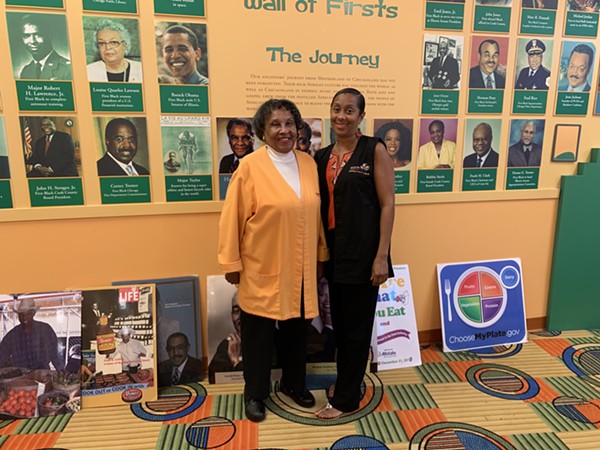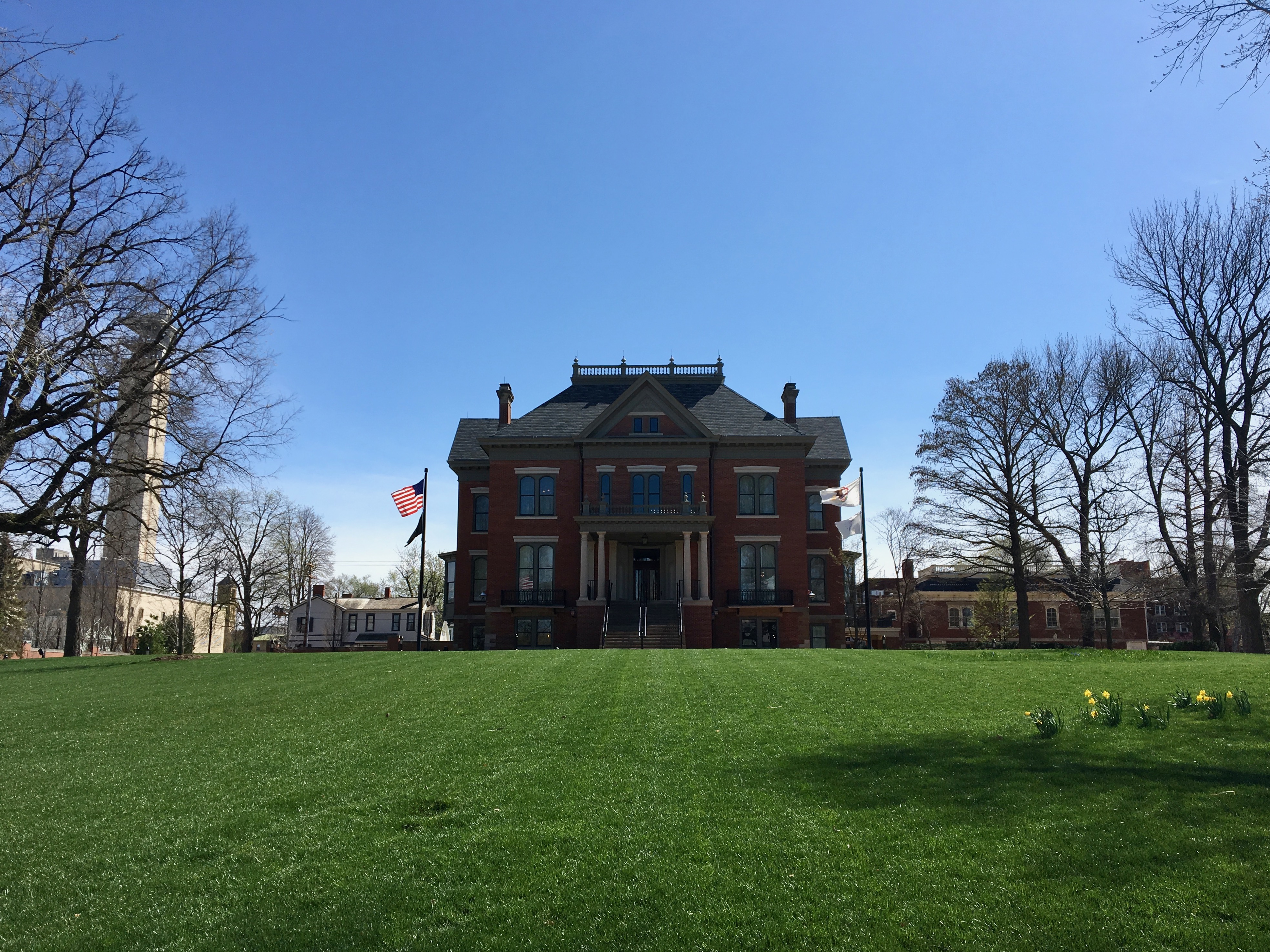
This year brought a resurgence of putting Black pride onstage and a national recognition of Juneteenth—and it was also the first in many years that the Bronzeville Children's Museum did not have its annual celebration.
The museum typically also celebrates Black History Month in February and Kwanzaa in December, complete with a "Kwanzaa king"—a man in regal garb who greets and takes pictures with children to get them excited about the holiday.
"For 22 years, we have been doing Juneteenth because of the importance of it," says Peggy Montes, who founded the museum with her daughter, Pia. "Very few of the states in the midwest, very few of the states east of the Mississippi ever celebrated Juneteenth. So, to see this upsurge in the celebration of Juneteenth, Pia and I, we said, 'Well, at last, at last.'"
But in the face of COVID-19, the museum closed its doors in March until further notice: no summer field trips and weekend programs, no "Smart Money Week" program, no Juneteenth event.
Today, four months after Illinois museums closed their doors for safety, there's no clear end in sight for the pandemic still upending daily life in the U.S. Some museums have reopened, but many that have interactive exhibits and are classified as "high touch"—like children's museums—have not. These prolonged closings have dealt a hard blow to the nation's nonprofit museums that are relying on admission, memberships, and philanthropic gifts to survive. About half of museums across the country don't have the funding to cover operating costs for more than six months, according to an American Alliance of Museums survey.
Luckily, the Bronzeville Children's Museum is not in that category, and unlike many museum owners, Peggy Montes says she and Pia are not worried about the museum's immediate future.
"We've been OK," she says. "Even though we don't have attendance . . . we've been able to sustain ourselves."
Pia Montes vividly remembers visiting children's museums as a kid while traveling around the country with her mother. But none of them were focused on African American history. Years later, as former Chicago Public Schools teachers, they both decided to change that.
"My mom, she's my hero," she says. "She's the most amazing woman I know. Incredible, just full of knowledge, and just a very important person to the city of Chicago."
And that's not an overstatement. Peggy Montes's long list of accomplishments and service to the cultural scene is extensive. She's chairman emeritus of the DuSable Museum of African American History, where she worked with museum founder Dr. Margaret Burroughs for decades. She's also a member of the Illinois Arts Council, one of the founding members of the Art Institute of Chicago's Leadership Advisory Committee, a member of the Museum of Science and Industry's Black Creativity program, and is active with the African American Association of Museums.
It was that involvement that led her to bring the idea to Pia to create a museum that would be something different. So in 1998, the two transformed a small storefront in Evergreen Plaza into the Bronzeville Children's Museum—its name a tribute to the neighborhood that birthed so much Black innovation in business, in the arts, and in culture—with Pia doing all the tours and with the legal help of Peggy's son, Paul, who is an attorney. Now 22 years later, it is the first and still only African American children's museum in the country.
"Usually when children, especially kindergarten children, primary-age children, when they visit museums, all they do is they walk around and they look up at the pictures and things, and there's really nothing for them to become involved with," Peggy Montes says. "So that's when we decided that we would have an interactive children's museum that talked about our history, our culture, and the contributions of our people."
Geared toward kids ages three to nine, the museum expanded and moved to its current location on 93rd and Stony Island in 2000. There, they can learn about healthy eating and exercise while walking on kid-sized treadmills, see the inventions of African American inventors, be immersed in S.T.E.M., and tour the people and landmarks that make up historic Bronzeville—all without leaving the museum doors.
And the museum's "Wall of Firsts" features images of more than 75 Black Chicagoans like Jean Baptiste Pointe DuSable, Harold Washington, Barack Obama, and Ida B. Wells, with a mirror so kids can see themselves among them.
"[With] little children, it is our responsibility to help develop self-esteem," Peggy Montes says. "Let them know that they are of worth, that they are somebody, and hopefully, establishing that at an early age will motivate them to go on and want to do something with their lives but also to want to help others. That's the beauty of it."
Instead of being a place for free play, the museum offers tours on the hour to teach and guide students throughout the exhibits. Each one of the exhibits takes one hour, with two exhibits per visit.
"You come in, it's set up classroom style, they have to sit down, they have to listen, you know, then you do your arts and crafts and then the last thing is play," Pia Montes says. "Because when they come and they see the toys, of course they're going to want to play. So that's also what makes us totally different."
It's that environment—and that difference—that can help visitors maintain safe distancing standards in a sanitized environment when high-touch museums and exhibits can reopen. Many state of Illinois guidelines such as scheduling attendee visits and staggering arrival times are practices the museum already has in place.
Though the space is currently empty, it remains pristine and stocked, ready for the next group of children to walk through its doors. That might be helpful for parents thinking about how to handle the uncertainty of school in the fall. Chicago Public Schools recently released a preliminary plan for reopening schools in which students in grades K-10 would attend school in person two days a week, leaving three days out of the week for at-home instruction.
"We do have interactives, but that's not the primary goal of why we are here," Peggy Montes says. "So in preparation for the children coming back to the museum, we don't really have to do that much. We have to just move around a few chairs and tables, and then they will be able to feel safe and we can protect them in terms of their visit to the museum."
Peggy and Pia Montes may not know exactly when the Bronzeville Children's Museum will reopen, but when it does, they will continue with their structured experiences—just with fewer visitors at a time, who are more spread out and wearing face masks. They will not be closing, Peggy Montes stresses, and they will continue to plan for the future, regardless of COVID-19. She says that's how they've always run their business.
"It's not just for today," she says. "We sit down and we plan for the future stability of our institution."
This story was produced in partnership with the Pulitzer Center. For more stories about the effect of COVID-19 on museums, please visit the Prairie State Museums Project at PrairieStateMuseumsProject.org.
COVID-19 Update: The connection between local and global issues–the Pulitzer Center's long standing mantra–has, sadly, never been more evident. We are uniquely positioned to serve the journalists, news media organizations, schools, and universities we partner with by continuing to advance our core mission: enabling great journalism and education about underreported and systemic issues that resonate now–and continue to have relevance in times ahead. We believe that this is a moment for decisive action. Learn more about the steps we are taking.













